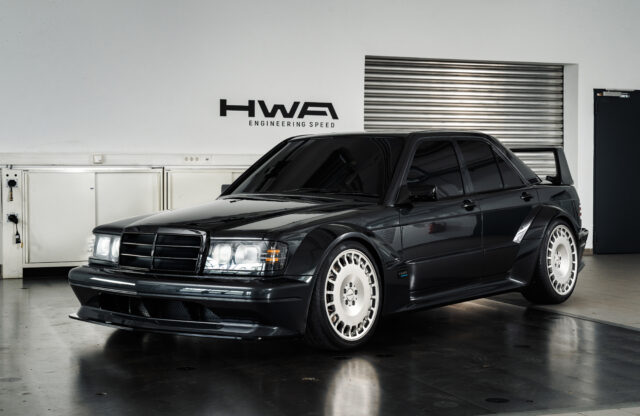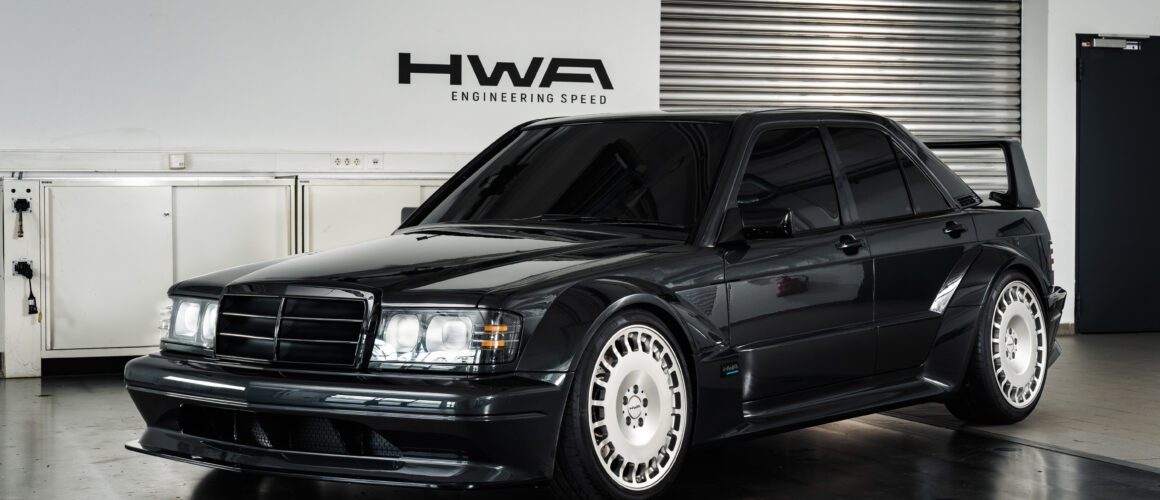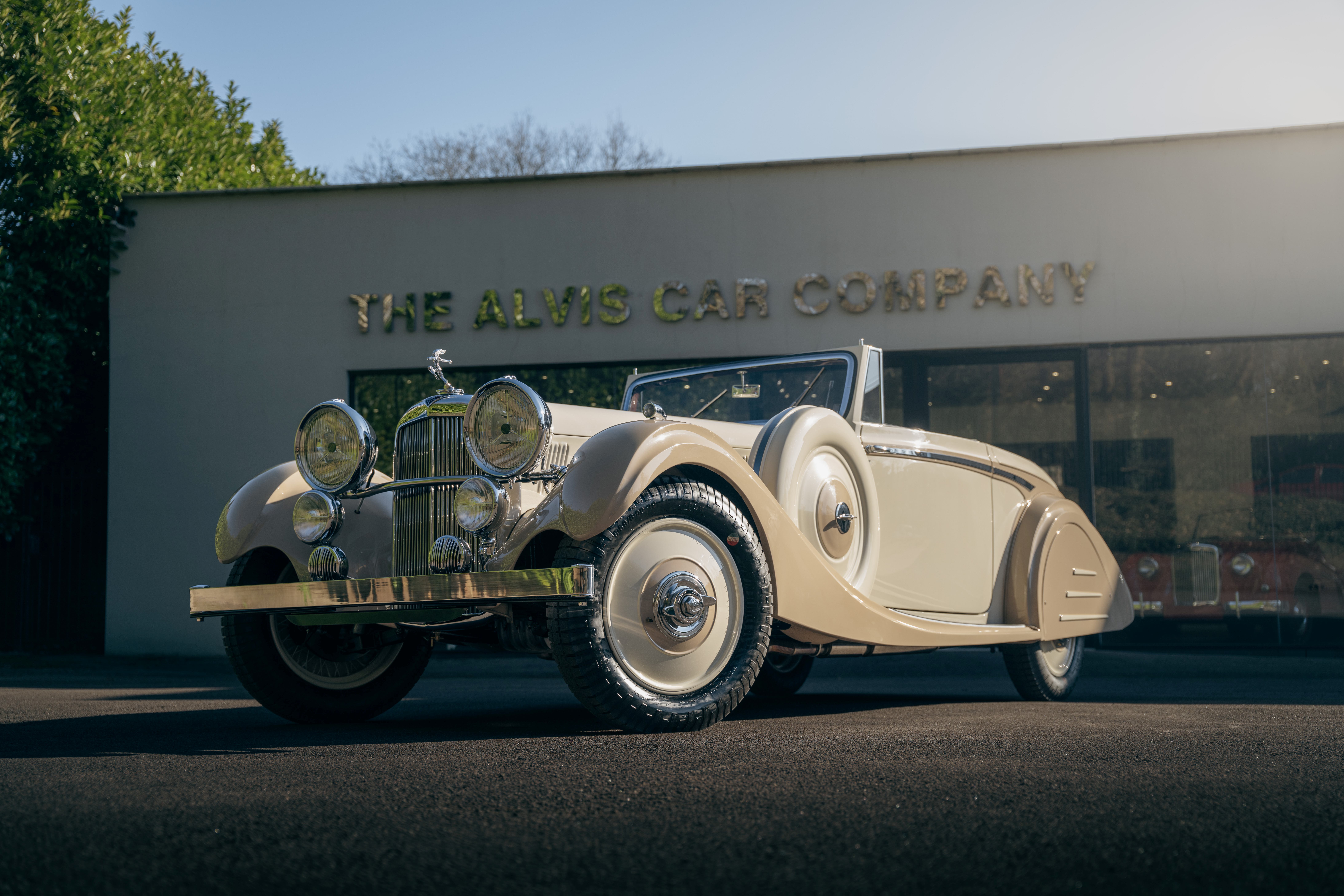“This is not a restomod, it’s a completely new car,” says Gordian von Schöning, chief engineer at HWA. Seeing the HWA Evo alongside the 1990s homologation hero that inspired it – the Mercedes-Benz 190E 2.5-16 Evo II – reinforces his point. The ‘Evo evolved’ has a longer wheelbase, wider track and completely bespoke bodywork. And what lurks beneath that carbonfibre is equally exotic.
HWA was founded by Hans Werner Aufrecht, best known as the ‘A’ in AMG. After DaimlerChrysler brought AMG in-house in 1998, Alfrecht set up his own company next door in rural Affalterbach. HWA soon proved its success in motor sport, winning 11 DTM championships with Mercedes-Benz – plus more than 480 HWA-powered victories in Formula 3. Today, it hand-builds around 120 AMG GT race cars a year.
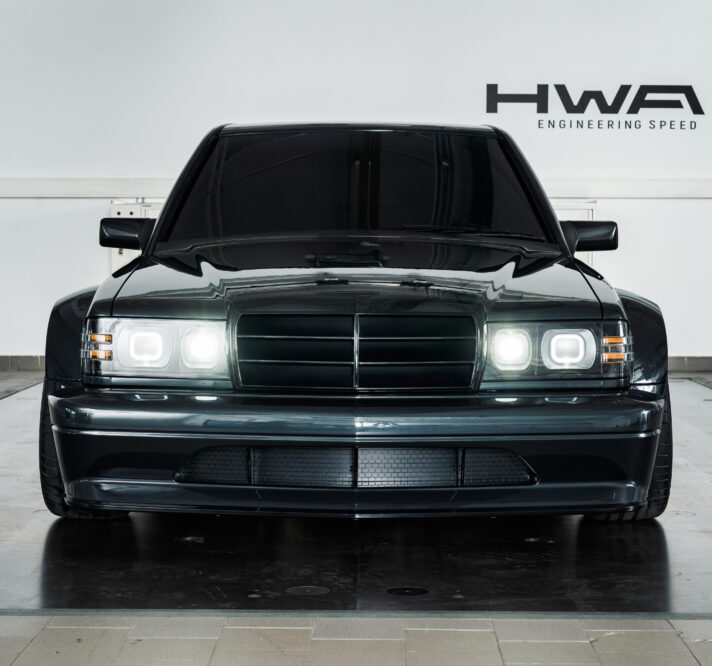
Marx blips the throttle a few times inside the workshop, and it sounds ferocious: the exhaust’s brutal bark is reminiscent of a DTM racer's
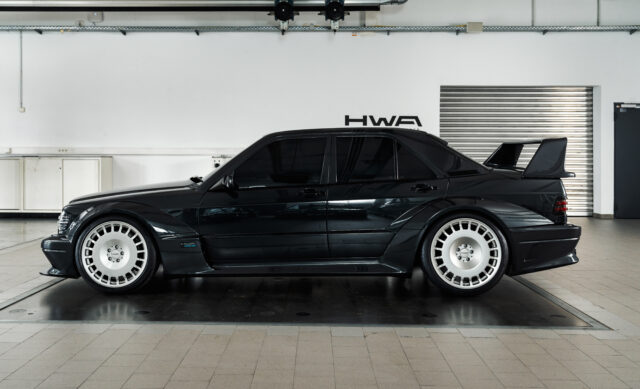
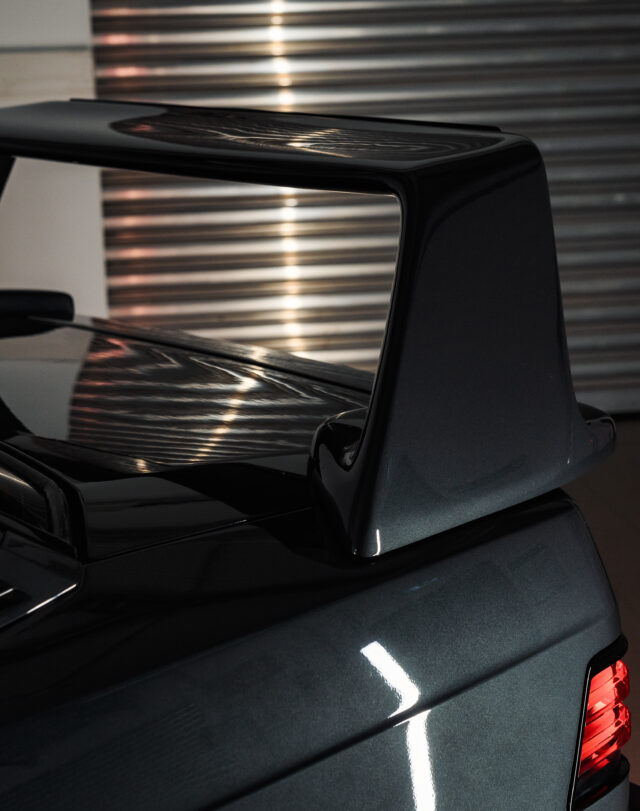
Away from the racetrack, HWA has worked closely with AMG on limited-run specials such as the road-legal CLK-GTR ‘Strassenversion’, CLK DTM and SL 65 Black Series. It also developed the 850bhp, 9000rpm V12 for the Pagani Huayra R, assembled the Apollo IE hypercar and is currently building the De Tomaso P72. The HWA Evo, however, is the first car to officially wear Hans Werner Aufrecht’s initials.
Ironically, while Aufrecht still headed up AMG, he launched what might be the world’s first restomod: a classic Mercedes-Benz 300 SL with the 6.0-litre V8 from an SL 60. Eight ‘Gullwing’ coupés and three roadsters were made, costing in excess of £1 million each. By that yardstick, the £730,000 asked for the Evo looks almost affordable, and HWA customers seem to agree. Of the 100 cars planned, CEO Martin Marx says 71 have already been reserved.
Pulling the wraps off the Evo ‘concept demonstrator’, Von Schöning says the “depth of engineering is on another level to any competitor”, later taking a not-too-cryptic swipe at Singer. Starting with a regular 190E donor car, HWA reinforces the steel centre section of its chassis and attaches custom aluminium subframes at either end, stretching the wheelbase by 80mm. The car is then clothed in structural carbonfibre, extending and exaggerating the lines of the original Evo II.
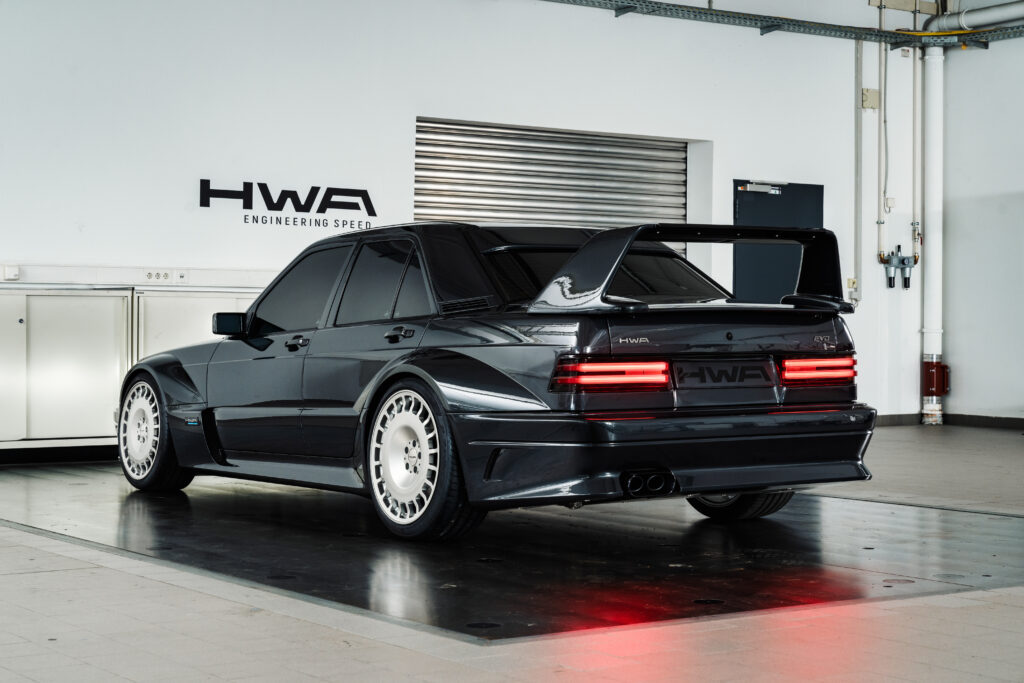
Edgar Chu, designer of the HWA Evo, likens it to one of his previous projects: the current Mercedes-Benz G-Class. “When you recreate an icon such as the G-Wagen or 190E Evo II, you can’t change too much,” he explains. “It’s important to retain the essence of the original.”
Thus, while every body panel is different (and three-pointed stars are notable by their absence), the Evo’s roots are readily apparent. Cool details include the one-piece LED headlights and indicators, dechromed grille and oversized oval tailpipe. Custom HWA paint finishes also reinvent classic Mercedes colours, including Silver Thistle and Sunset Orange.
Even so, the Evo’s squat, low-slung stance clearly sets it apart from its OEM ancestor. Six-spoke or racing-style aero alloy wheels – 19-inch at the front and 20s at the rear – are tucked tight inside arches that have swollen by 150mm on either side. A hydraulic nose-lift system is, thankfully, fitted as standard.
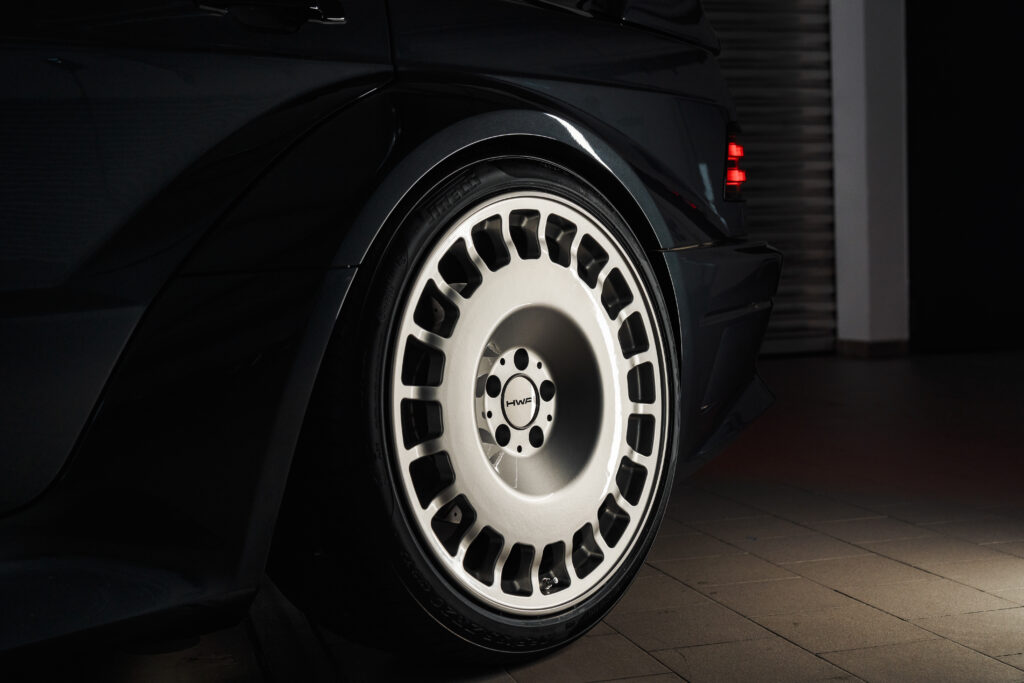
The 1990 Evo II’s 2.5-litre four-cylinder engine could muster 235hp – close to a contemporary Porsche 964 Carrera – but HWA’s version can double that output, making 450bhp as stock, or 500bhp with the ‘Affalterbach’ performance pack. Its 3.0-litre twin-turbo V6 is used by Mercedes in models such as the AMG E 53 and S 350, but is heavily modified here, starting with a custom ECU. Marx blips the throttle a few times inside the workshop, and it sounds ferocious: the exhaust’s brutal bark is reminiscent of a DTM racer’s.
In fact, the DTM connection goes deeper, with racing-derived double-wishbone suspension at both ends, plus billet-machined wheel carriers. Carbon-ceramic brakes and electronically adjustable suspension are both on the options list. Don’t go looking for a paddles behind the steering wheel, though; the rear-driven Evo comes with a six-speed manual only – and is likely all the better for it.
So, how will it drive? We’ll find out later this year, before production starts – at a rate of one car per week – in 2025. Still, a kerbweight of just 1360kg, split evenly between the front and rear axles, certainly bodes well. CEO Marx has already tested this prototype extensively, and describes it as a “road-legal, track-ready supercar”.
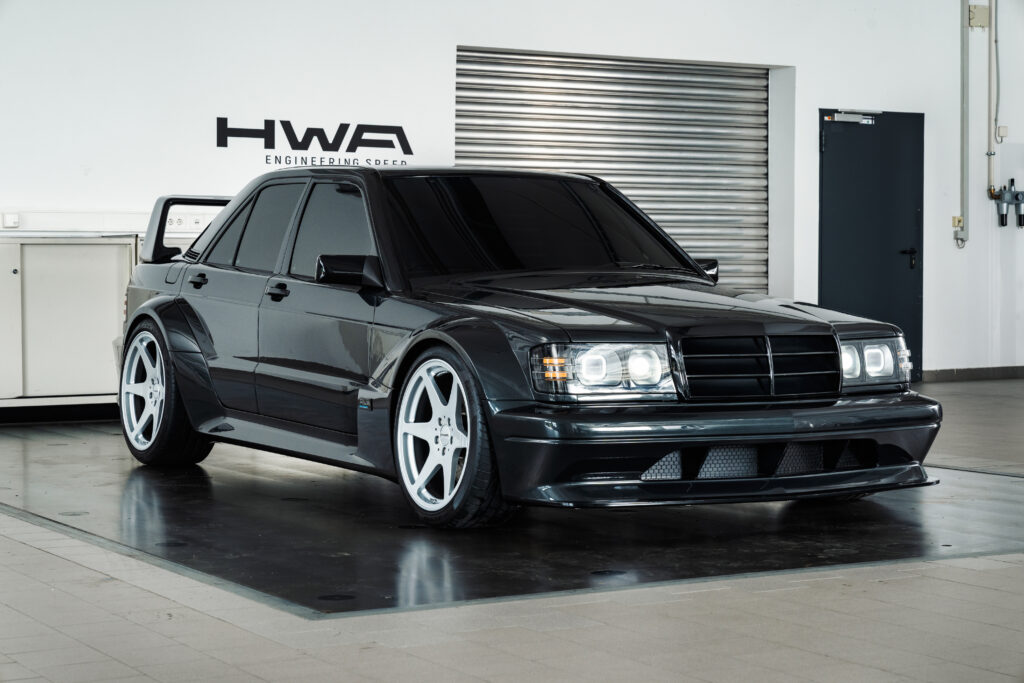
HWA will also reveal the LHD-only interior – hidden for now behind dark-tinted glass – in the coming months. Edgar Chu says to expect a “classic 190E dashboard with configurable digital dials”, along with retro-look Recaro seats and tailored leather luggage. With more restomods (sorry, new cars) in the pipeline, this latest chapter in the story of AMG and HWA is just getting started.
Find out more about HWA here.
